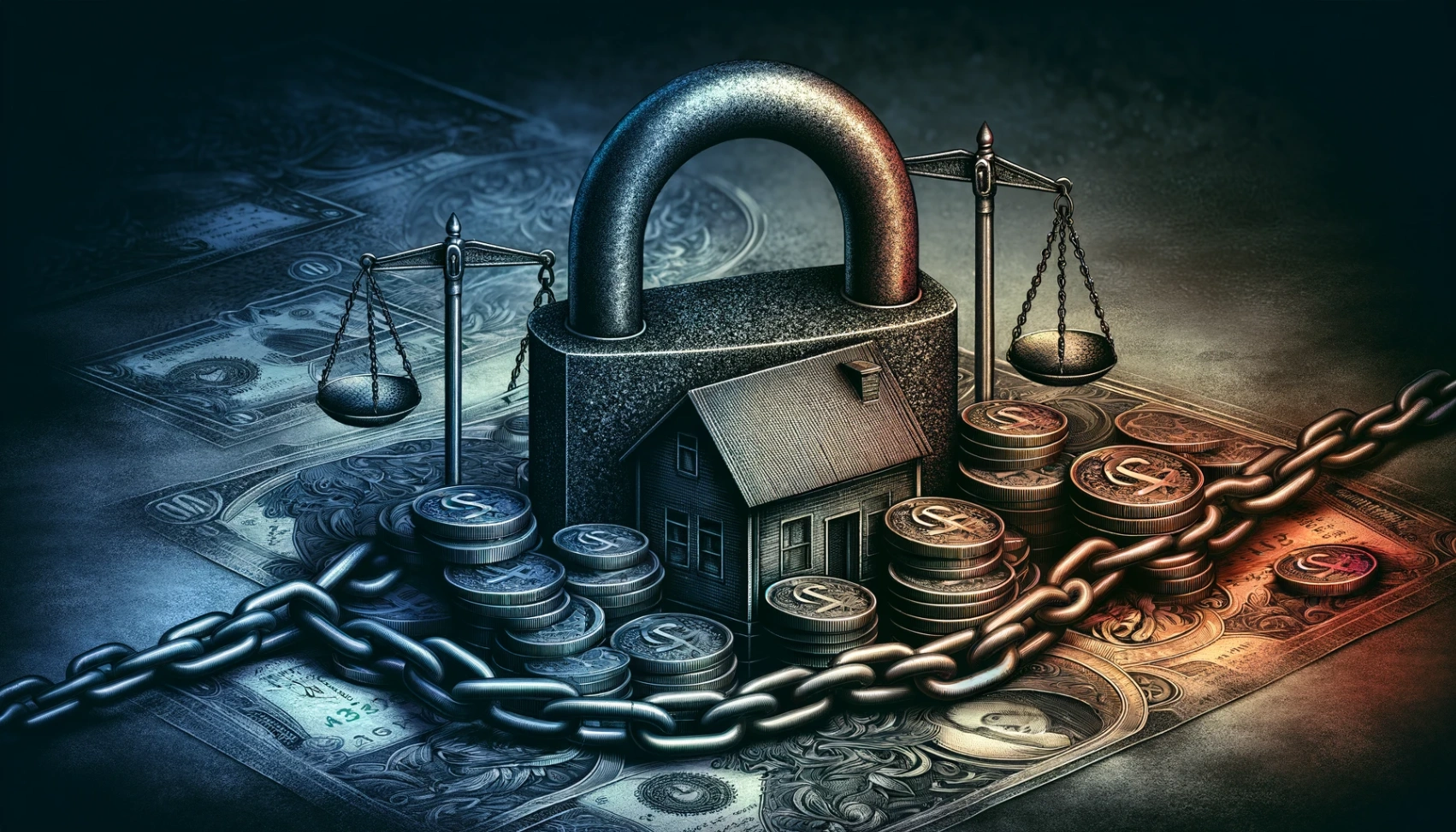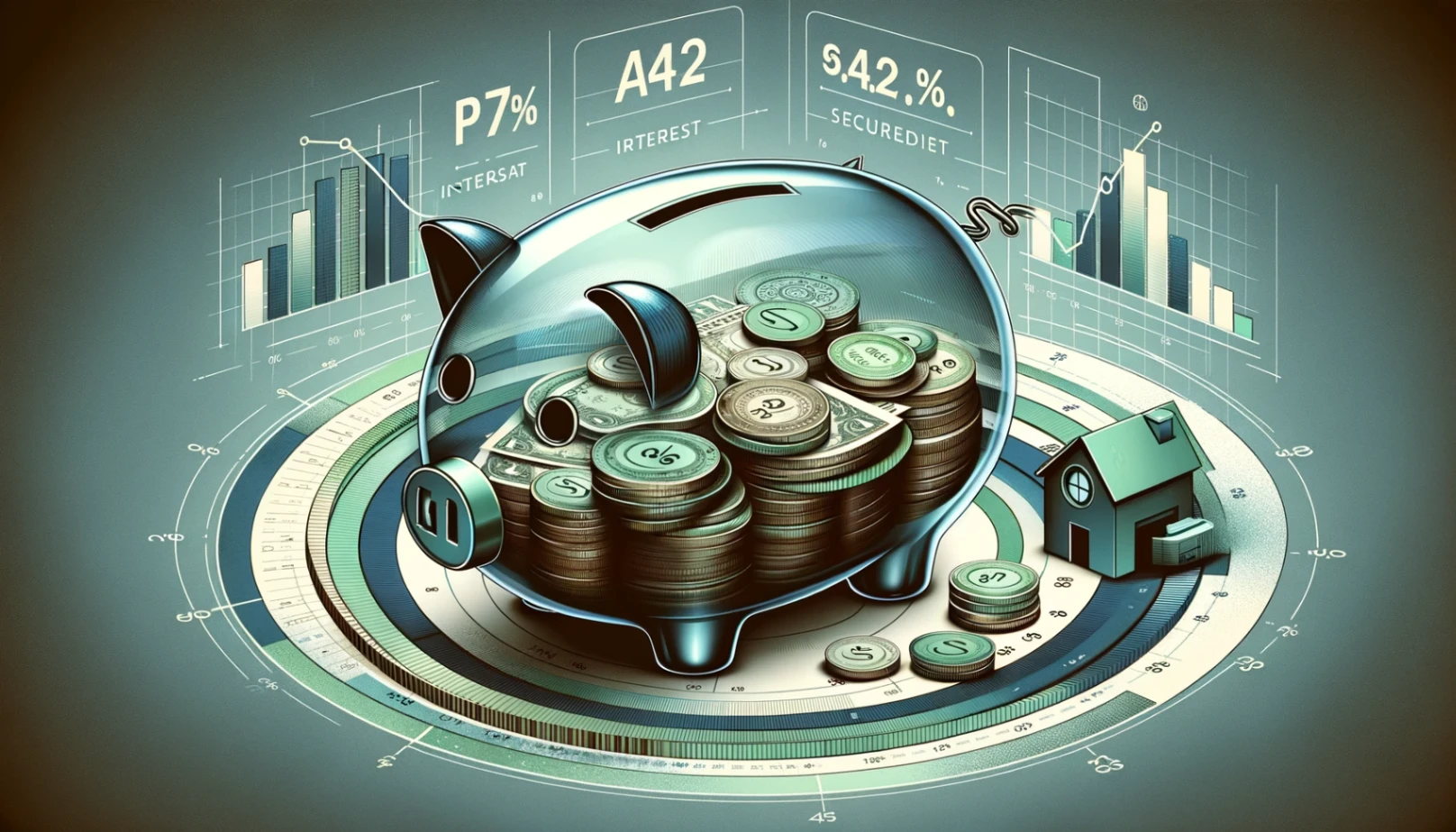Are you new to finance and wondering about secured loans? This article will provide a simple, jargon-free explanation to help beginners understand secured loans and make informed financial decisions.
Whether you’re considering borrowing or just curious about financial terms, this guide will break down the essentials in a clear and accessible manner.
What is a Secured Loan?
A secured loan involves pledging an asset, like your home or car, as collateral to the lender. This collateral reduces the lender’s risk, potentially resulting in lower interest rates.
If you can’t repay the loan, the lender can take the collateral as compensation.
Examples of Common Types of Collateral
Collateral is a crucial element in securing loans, providing lenders with assurance. Below are common types of collateral that borrowers often use to back their secured loans:
- Real Estate (Property or Home)
- Automobiles (Cars, Trucks, Motorcycles)
- Savings Accounts or Certificates of Deposit (CDs)
- Jewelry and Valuables
- Equipment or Machinery (for business loans)
- Stocks and Bonds
- Boats and Recreational Vehicles
- Artwork and Collectibles
- Future Income (for payday loans)
- Insurance Policies (Cash Value)
How Does a Secured Loan Work?
A secured loan operates on a simple principle: collateral. Understanding how it works is vital to making informed financial decisions. Below, we’ll break down the process step by step:
- Application and Collateral Assessment: You apply for the loan, and the lender assesses the value and condition of the collateral you’re offering to secure the loan.
- Loan Approval and Amount: Once the lender approves your application, they determine the loan amount you qualify for based on the value of the collateral.
- Interest Rates and Terms: The lender establishes the interest rate and the loan terms, including the repayment period and monthly installments.
- Repayment Schedule: You make regular payments, typically including principal and interest, according to the agreed-upon schedule.
- Consequences of Default: If you fail to make payments as agreed, the lender has the right to take possession of the collateral to recover their losses, as specified in the loan agreement.
Benefits of Secured Loans
Secured loans offer several advantages for borrowers, making them a practical financial option. Below, we outline ten critical benefits of secured loans that can help you make informed financial decisions:
- Lower Interest Rates: Secured loans often have lower interest rates, saving you money.
- Access to Larger Loan Amounts: Collateral enables larger loans for significant expenses.
- Easier Approval for Poor Credit: Collateral boosts accessibility for those with lower credit scores.
- Longer Repayment Terms: Secured loans offer longer terms for manageable payments.
- Potential Tax Benefits: Certain secured loans, like mortgages, may provide tax deductions.
- Flexible Use of Funds: Funds can be used for various purposes, from home improvements to debt consolidation.
- Improved Credit Score: Responsible repayment can boost your creditworthiness.
- Lower Risk for Lenders: Collateral reduces lender risk, leading to favorable terms.
- Collateral Protection: Lenders safeguard collateral to maintain its value.
- Negotiable Terms: Borrowers often negotiate terms to meet unique financial needs.
Secured Loan vs. Unsecured Loan
Knowing the distinctions between secured and unsecured loans is crucial when borrowing money. Let’s clarify these loan types and outline their pros and cons to help you make informed financial choices:
Secured Loans
Pros:
- Lower interest rates
- Access to more significant loan amounts
- Easier approval for those with poor credit
- Longer repayment terms
- Potential tax benefits
Cons:
- Risk of losing collateral
- Limited flexibility in the use of funds
- Need to possess valuable collateral
- More extended application and approval process
- Potentially higher total interest paid
Unsecured Loans
Pros:
- No collateral required
- Faster application and approval process
- Greater flexibility in the use of funds
- Less risk to personal assets
- Potentially lower total interest paid
Cons:
- Higher interest rates
- Smaller loan amounts
- Stricter eligibility requirements
- May require a strong credit history
- Limited options for those with poor credit
This breakdown should help beginners understand the fundamental differences between secured and unsecured loans and the pros and cons associated with each type.
How to Apply for a Secured Loan
Applying for a secured loan is a systematic process involving key steps. In this guide, we’ll walk you through securing a loan with collateral:
- Assess Your Loan Needs: Determine the amount you need to borrow and how it will be used for your financial needs.
- Choose Collateral: Select an asset or property, such as real estate or a vehicle, that you’ll use as collateral to secure the loan.
- Research Lenders: Explore different lenders to find one offering favorable terms, interest rates, and repayment options that suit your needs.
- Prepare Required Documents: Gather necessary documents like identification, proof of income, and details about the chosen collateral.
- Complete the Application: Fill out the lender’s loan application form, providing accurate and complete information about your financial situation.
- Await Approval and Review Terms: After submitting your application, wait for approval and carefully review the loan terms and conditions before accepting.
- Sign the Agreement and Receive Funds: Once approved, sign the loan agreement and, upon lender verification, receive the loan amount for your intended purpose.
Following these steps can help simplify the process of applying for a secured loan and increase your chances of a successful loan application.
Secured Loan Eligibility
When applying for secured loans, several factors come into play that can affect your eligibility. Understanding these factors is crucial for a successful loan application.
- Credit Score: Your credit score affects eligibility; higher scores are preferable.
- Collateral Value: Valuable and marketable collateral enhances eligibility.
- Loan-to-Value (LTV) Ratio: Lower LTV ratios improve eligibility chances.
- Income and Debt-to-Income Ratio: A stable income and lower debt-to-income ratio boost eligibility.
- Credit History: Your credit history, including past issues, influences eligibility.
- Employment and Stability: Lenders consider your job stability.
- Loan Purpose: Some loans have specific eligibility criteria based on their purpose.
Understanding Interest Rates and APR
Interest rates and annual percentage rates (APR) are crucial in the cost of secured loans. Here’s a concise breakdown:
Interest Rates:
- The cost of borrowing is expressed as a percentage.
- Varies based on creditworthiness and collateral.
- Strong credit often means lower rates.
- Secured loans usually have lower rates due to collateral.
Annual Percentage Rate (APR):
- Broader measures include interest, fees, and charges.
- Helps borrowers compare total costs.
- Includes origination and application fees.
- Vital for comparing secured loan offers effectively.
Risks of Secured Loans
While secured loans offer various advantages, it’s essential to understand the potential risks involved. Here are some critical considerations before securing a loan with collateral:
- Risk of Losing Collateral: Defaulting on the loan can result in the loss of the pledged collateral.
- Impact on Credit Score: Failure to repay can negatively affect your credit score.
- Overleveraging: Access to more significant loan amounts may lead to excessive debt.
- Limited Flexibility: Collateral can restrict the use of assets tied to the loan.
- Interest Costs: While rates are lower, total interest paid over the loan term can be high.
- Longer Application Process: Secured loans often involve more paperwork and time.
- High Stakes: Your valuable assets are at risk if you cannot meet repayment obligations.
Understanding these risks is essential when considering secured loans to make informed financial decisions.
Summing It Up
In summary, understanding secured loans is essential for financial beginners. They offer benefits like lower rates and increased credit access, but potential risks, such as collateral loss or overleveraging, must be considered.
This knowledge empowers beginners to make informed financial choices.






